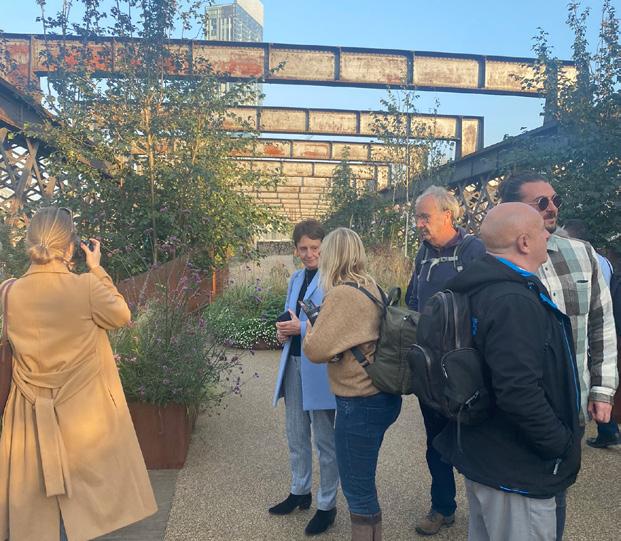
3 minute read
The Future is Green
Advertorial by MeadowSow
We only have to reflect on last summer to truly understand the challenges that lie ahead for us all and how we might now consider the impact of climate change through a different lens.
Regardless of frequent media coverage and a wealth of climate data and information, there was an element of shock and surprise as Britain recently sweltered through 40°C temperatures. Suddenly the impact of environmental change feels very real and very close to-home. Climate change, pollution and overdevelopment are among the threats that have contributed to declining biodiversity in recent years and there is now a tangible sense of urgency when we consider biodiversity loss. Why? Because biodiversity provides us with food directly and via pollination, supports intrinsic medical advancements and has been shown to positively impact on mental wellbeing. Rewilding is key to supporting biodiversity loss reversal. The eradication of wildflower meadows, botanically richer than any other habitat, has been staggering, with 97% of meadows lost in the UK since the 1930’s.

Wildflower meadows can contain 40 species in one square metre.
Rewilding initiatives have provided focus and an opportunity for governments, local authorities and developers to invest in long-term, sustainable strategies that will minimise the impact of biodiversity loss.
At a local level, communities and organisations are working together to return wildflower meadows to the UK landscape. ‘Grow Wild’ is the national outreach learning initiative of the Royal Botanic Gardens, Kew. It is the UK’s biggest wildflower campaign, bringing people together to transform local spaces with native wildflowers and plants.
At a national level, and with BNG soon to become mandatory in England, it will be necessary for developers to leave the natural environment in a measurably better state than it was pre-development.
To discharge the condition, the relevant planning authority must approve the development’s Biodiversity Net Gain plan, with 10% the minimum statutory target.
Sam Brittain, Landscape Architect, Croudace Homes
While BNG mandatory targets will apply mainly to developers, other sectors can apply similar best practice strategies to support biodiversity loss renewal by simply adopting the goal of the framework. As an example, Kent County Council (with funding support from Natural England) has recently commissioned a strategic viability assessment of BNG in Kent in order to understand whether an adoption of a 20% target for BNG within the county is viable.
BNG is an important development for landscape professionals; with enhanced planning and design comes many additional ecosystem benefits that have long been advocated for.
Whether local or national, mandated or voluntary, we should now all have biodiversity loss reversal at the top of our agenda.
MeadowSow
The UK’s most prominent wildflower experts are now offering a premium seed solution for wholesalers. With state-ofthe-art germination testing and cleaning, the purity and viability of our UK provenance single species seed is industry leading.
For all enquiries please contact:
wildflower@wildflowerturf.co.uk
T: 01256 771 222 www.wildflowerturf.co.uk










